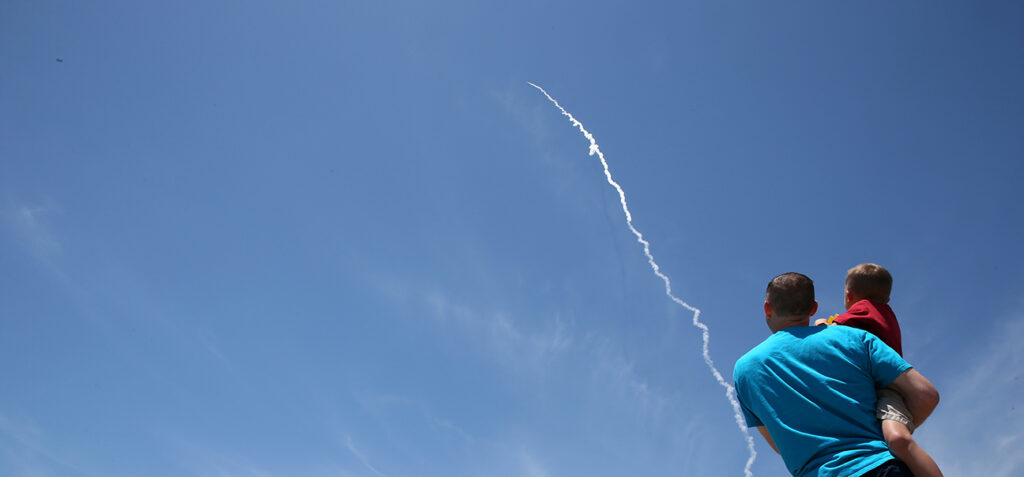People watch as the Ground-based Midcourse Defense element of the United States ballistic missile defense system launches during a flight test from Vandenberg Air Force Base, California, on May 30, 2017. U.S. President Donald Trump has said he wants to develop a new anti-missile system for the country. REUTERS
THE WATCH STAFF
Canada and the United States are discussing Canada’s possible participation in U.S. government’s planned “Golden Dome” missile defense system for North America, with an eye on research involving the detection of incoming threats, the U.S. commander for North American Aerospace Defense (NORAD) told a defense conference on March 5, CBC News reported.
“I’ll tell you that Canada is very involved with us in talking primarily about the sensor domain awareness dome that needs to feed the rest of the Golden Dome,” said Gen. Gregory M. Guillot, commander of United States Northern Command (USNORTHCOM) and NORAD, at the Conference of Defence Associations Institute annual forum in Ottawa.
Canadian Defence Minister Bill Blair said in February that Canada was prepared to join in development of the defense shield, despite Canada’s decades-long moratorium on involvement in the U.S. antiballistic missile program. “Frankly, an integrated missile defense system for all of North America is the thing that makes sense to everybody,” he said. “And we’ve been able to demonstrate that we are a ready and willing partner, and that we have a great deal to contribute to the alliance.”
U.S. President Donald Trump issued an executive order in January calling for the creation of the “Iron Dome for America” — a “next-generation missile defense shield … against ballistic, hypersonic, advanced cruise missiles and other next-generation aerial attacks.” In late February, the Pentagon changed the name to the Golden Dome.

In June 2022, Canada announced a $38.6 billion plan to modernize NORAD in the next two decades. Canada and the U.S. will install modern over-the-horizon radar stations and seabed-based sensors to detect ballistic missile-carrying submarines in the Arctic, as well as launch a new series of surveillance satellites.
At the defense forum in March, Blair said the U.S. is talking about a major new investment with the Golden Dome, and Canada has a role to play in that, notably in Arctic domain awareness. “That is our sovereign territory,” he said.
Retired Adm. James Stavridis, the former Supreme Allied commander of NATO, recently outlined the three elements of a successful defense shield in a column for Bloomberg: space-based sensors and interceptors; artificial intelligence “to knit together the space sensors and interceptors with land-based air defense systems;” and “a new method of destroying incoming missiles: lasers.”
“Lasers feel like they are the air defense weapon of the future … forever. This will be the most challenging of the three elements of the system and seems to be the furthest away,” Stavridis wrote. “But a truly effective Iron Dome system is hard to imagine without a laser component, given the high-speed nature and possibilities of being overwhelmed and running out of conventional air defense missiles.”
In testimony before the Senate Armed Services Committee on February 13, Guillot said: “The threats to North American airspace have steadily grown more complex, and now include a spectrum of competitor capabilities that range from modernized long-range bombers and hypersonic cruise missiles down to small unmanned systems that can fit into a backpack. While two decades of whole-of-government response have reduced the threat of terrorist threats to civil aircraft, NORAD maintains the ability to deter and defeat nation-state threats from every avenue of approach to North America while safeguarding national leaders from aerial threats, both in the National Capital Region and around the country.”

